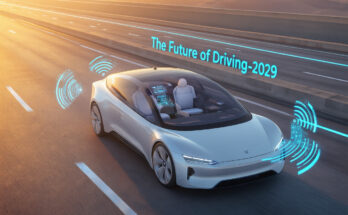Ever felt that mild panic when dropping $40,000 on a new car, only to see something way cooler announced a month later? Yeah, that gut-punch feeling is real.
The automotive landscape is about to undergo a seismic shift with new cars coming in 2025 and 2026 that might make today’s purchases look decidedly… yesterday. From electric hypercars to affordable EVs that actually make sense, the next two years are packed with releases worth waiting for.
I’ve spent weeks sorting through manufacturer announcements, spy shots, and industry leaks to separate the genuine game-changers from the marketing fluff. And honestly? Some of these upcoming models have features that will make you glad you held onto your current ride a bit longer.
But here’s the million-dollar question – is delaying your car purchase actually worth it?
The Evolution of Automotive Innovation: 2025-2026
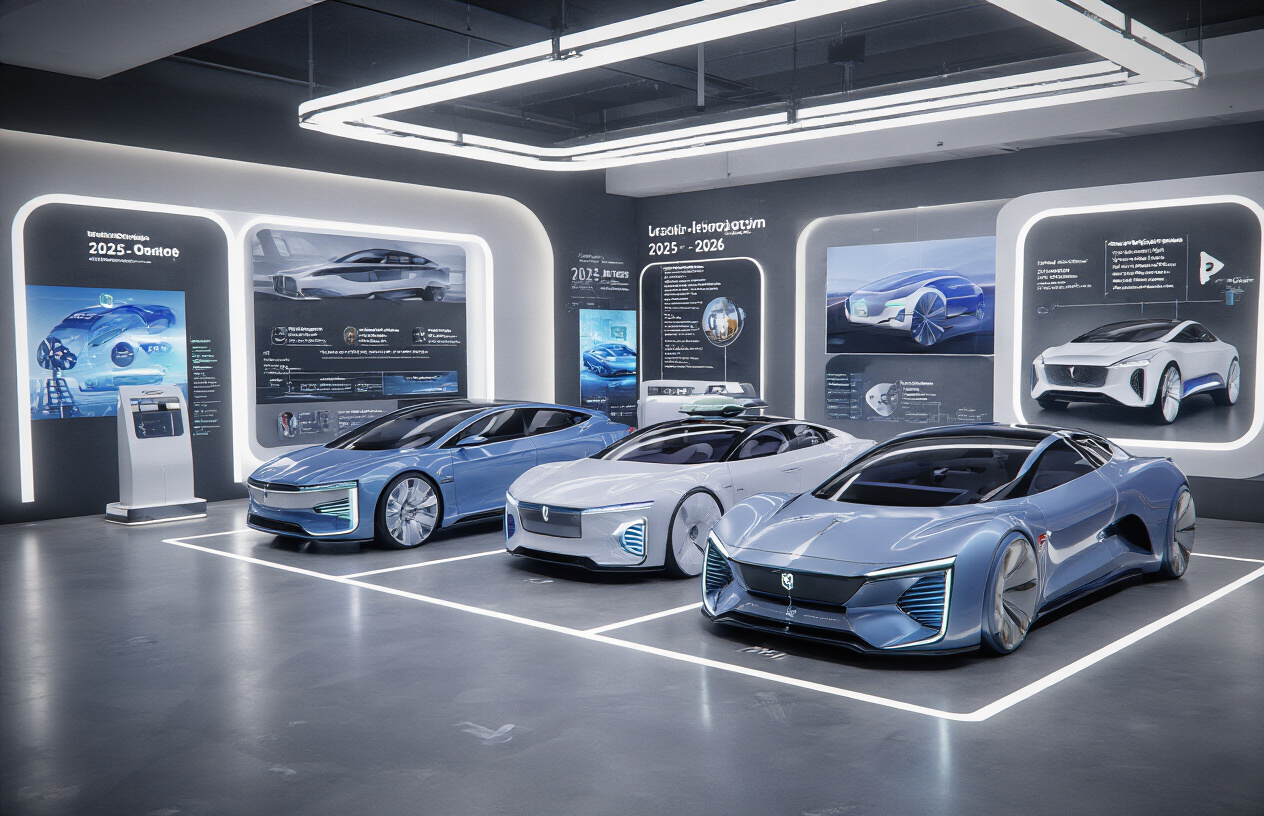
Game-changing technological advancements
The automotive landscape is about to get a serious upgrade. Cars releasing in 2025-2026 aren’t just new models – they’re completely reimagining what vehicles can do.
Autonomous driving is finally maturing beyond the fancy marketing speak. Level 3 and 4 automation will become standard in premium models, with some manufacturers promising hands-free highway driving for up to 80% of journeys.
Battery tech is making massive leaps too. Solid-state batteries are moving from lab experiments to actual production cars, promising 500+ mile ranges and charging times slashed to under 15 minutes. Toyota and Volkswagen are leading this charge, no pun intended.
The interiors? Think less car, more living room. Augmented reality windshields will overlay navigation directions onto the actual road, while customizable ambient lighting and reconfigurable spaces transform based on whether you’re commuting or road-tripping.
Shifting consumer preferences driving design
Gone are the days when a sleek silhouette was enough. Today’s buyers want cars that reflect their personal brand and lifestyle choices.
Modularity is the buzzword designers can’t stop using. Many 2025-2026 models feature interchangeable body panels and interior components that owners can swap out as easily as changing phone cases.
The SUV craze? It’s evolving. The new crop of vehicles blend categories in ways we haven’t seen before – think ultra-compact SUVs with convertible roofs and pickup beds that expand or contract based on your needs.
Digital personalization goes beyond screens. Your car will recognize you, adjust everything to your preferences, and even suggest routes based on your mood that day.
Environmental regulations influencing new models
Automakers aren’t just going green because it’s trendy – they’re doing it because they have to.
Europe’s Euro 7 standards and similar regulations worldwide are forcing unprecedented innovation. Many brands are skipping hybrid steps entirely, moving straight to all-electric lineups by 2026. Those still making combustion engines are engineering them to run on synthetic carbon-neutral fuels.
Materials inside these cars tell their own environmental story. Recycled ocean plastics, mushroom leather, and carbon-capturing fabrics aren’t just marketing gimmicks anymore – they’re becoming standard across price points.
Manufacturing processes are changing too. Several 2025 models will be built in carbon-negative factories that actually remove more CO2 from the atmosphere than they produce.
How 2025-2026 models compare to current offerings
The jump from today’s cars to these future models isn’t incremental – it’s revolutionary.
| Feature | Current Models (2023-2024) | Upcoming Models (2025-2026) |
|---|---|---|
| Range (EVs) | 250-350 miles typical | 400-600+ miles common |
| Charging | 20-40 minutes (10%-80%) | 8-15 minutes (10%-80%) |
| Automation | Level 2, driver monitoring | Level 3-4, limited hands-off |
| Materials | Limited sustainable options | Comprehensive eco-materials |
| Connectivity | Smartphone integration | Full digital ecosystem integration |
The pricing might surprise you. While flagship tech models will command premium prices, competition is fierce enough that many innovations will quickly filter down to mainstream models.
The simple truth? Waiting until 2025-2026 means skipping an entire technological generation. Cars launching then will make today’s “advanced” vehicles feel as outdated as flip phones in the age of smartphones.
Luxury Sedans and Sports Cars Worth the Wait

A. Revolutionary performance specifications
Ever seen a car that makes your jaw drop before you even know the specs? The 2025-2026 luxury lineup is that car. We’re talking about electric hypercars hitting 0-60 in under 2 seconds. Not a typo. TWO seconds.
The Mercedes AMG One successor is rumored to pack over 1,200 horsepower while Bugatti’s next flagship might push 1,800 hp. Ridiculous numbers that weren’t possible five years ago.
But raw power isn’t everything. The new Porsche electric sports cars are integrating four-wheel steering that responds in milliseconds, not seconds. Ferrari’s hybridization strategy isn’t just about emissions—it’s delivering torque that pins you to your seat from 0 RPM.
B. Next-generation interior experiences
Forget what you know about car interiors. The 2026 Bentley Flying Spur will feature augmented reality displays that project navigation directly onto the road ahead. No more looking down at screens.
The Rolls-Royce Spectre is bringing electrochromic glass roofs that adjust transparency based on sunlight intensity and your preferences. Touch a button, and the entire roof goes from clear to opaque.
Mercedes is testing seats with 64-point pressure mapping that adjusts to your body in real-time. Backache on long drives? Not anymore. And haptic feedback controls are replacing buttons—you’ll feel a gentle pulse when you’ve activated a function.
C. Pricing expectations and value proposition
The sticker shock is real. Most of these beauties start north of $200,000, with limited editions pushing past $2 million. The Aston Martin Vanquish will likely command $350,000 while the new Ferrari SF90 successor might hit $625,000.
But here’s what nobody’s talking about: depreciation curves are flattening for these ultra-luxury vehicles. The Porsche Taycan Turbo S has held value better than expected, setting a precedent for electric performance cars.
And the tech trickles down fast. The air suspension system in the upcoming S-Class will appear in the E-Class within 18 months. You’re essentially paying to beta-test tomorrow’s mainstream features.
D. Limited editions and collector opportunities
Smart money is watching the Lamborghini Ultimae successor. Only 999 units planned worldwide, and they’re already oversubscribed by 300%. That’s not just a car—it’s an investment that might outperform your stock portfolio.
Bugatti’s final pure-combustion hypercar will be limited to just 99 examples. Collectors are placing $500,000 deposits without seeing so much as a sketch.
McLaren is creating a 25-unit special edition with body panels woven from carbon fiber and titanium—a manufacturing technique never before used in automotive production. Each one is practically a museum piece from day one.
E. Head-turning design elements
The 2026 Maserati GranTurismo is bringing back suicide doors—but electrified and with biometric security. Just approach the car and it recognizes you, swinging open without a touch.
Aston Martin’s new design language features illuminated grilles that create a 3D light signature visible from blocks away. Their signature side strakes now integrate cooling channels that glow subtly at night.
Porsche is experimenting with “living surfaces”—exterior panels that subtly reshape at speed for better aerodynamics. The rear wing on the new 911 variant doesn’t just extend; it morphs its profile depending on your speed and driving mode.
Ferrari’s next flagship will feature glass panels in the hood, showcasing the engineering masterpiece underneath with theatrical lighting. It’s not just transportation—it’s performance art.
Electric Vehicles Leading the Charge

Extended range breakthroughs
The EV game is completely changing for 2025-2026. Remember when 300 miles was impressive? Those days are done. Several upcoming models are smashing the 400-mile barrier without breaking a sweat.
Mercedes has their Vision EQXX concept tech filtering into production cars, promising over 620 miles on a single charge. Tesla’s next-gen Model 3 Highland is rumored to push beyond 450 miles using their new battery architecture.
The real eye-opener? Solid-state batteries finally moving from lab to road. Toyota and Nissan both have models planned with this tech, potentially offering 600+ miles range and drastically reduced weight.
Chinese manufacturer NIO isn’t messing around either – their upcoming ET7 sedan aims for 500+ miles using their latest battery pack designs.
Faster charging capabilities
Gone are the days of planning your entire day around charging stops. The 2025-2026 lineup is bringing charging speeds that’ll make you do a double-take.
Several upcoming models will feature 800V architecture (up from the typical 400V), slashing charging times dramatically. Hyundai’s next-gen Ioniq series promises 10-80% charges in under 15 minutes.
Porsche is pushing even further with their PPE platform vehicles, aiming for 350kW+ charging capabilities that could add 200 miles in just 10 minutes.
The real breakthrough? New thermal management systems that maintain these ultrafast charging speeds in all weather conditions, not just perfect lab scenarios.
New EV brands entering the market
The EV market is getting crowded – and that’s fantastic news for buyers.
Vietnamese manufacturer VinFast is bringing their full lineup to Western markets, with competitive pricing and tech-focused interiors.
Sony and Honda’s joint venture, Sony Honda Mobility, will debut their first production vehicle – combining Sony’s tech prowess with Honda’s manufacturing excellence.
Chinese luxury brand ZEEKR is expanding globally with stunning designs that give established premium brands serious competition.
And don’t sleep on Lucid Motors expanding their lineup beyond the Air with more affordable options that maintain their incredible efficiency.
Affordable electric options finally arriving
The EV revolution is finally hitting prices regular folks can actually afford.
Volkswagen’s ID.2 is targeting a sub-$25,000 price point while still offering 250+ miles of range – a genuine game-changer for mass adoption.
Renault’s reborn R5 EV combines retro styling with modern tech at around $28,000, proving affordable doesn’t mean boring.
Kia’s planning a compact EV crossover below $30,000 with features previously found only in luxury models.
Even Tesla’s long-promised $25,000 model might finally materialize, potentially called the Model 2, with production rumored to start in late 2025.
The waiting game for reasonably priced EVs is almost over – and they’re bringing specs that would’ve seemed impossible just a few years ago.
SUVs and Crossovers Reimagined
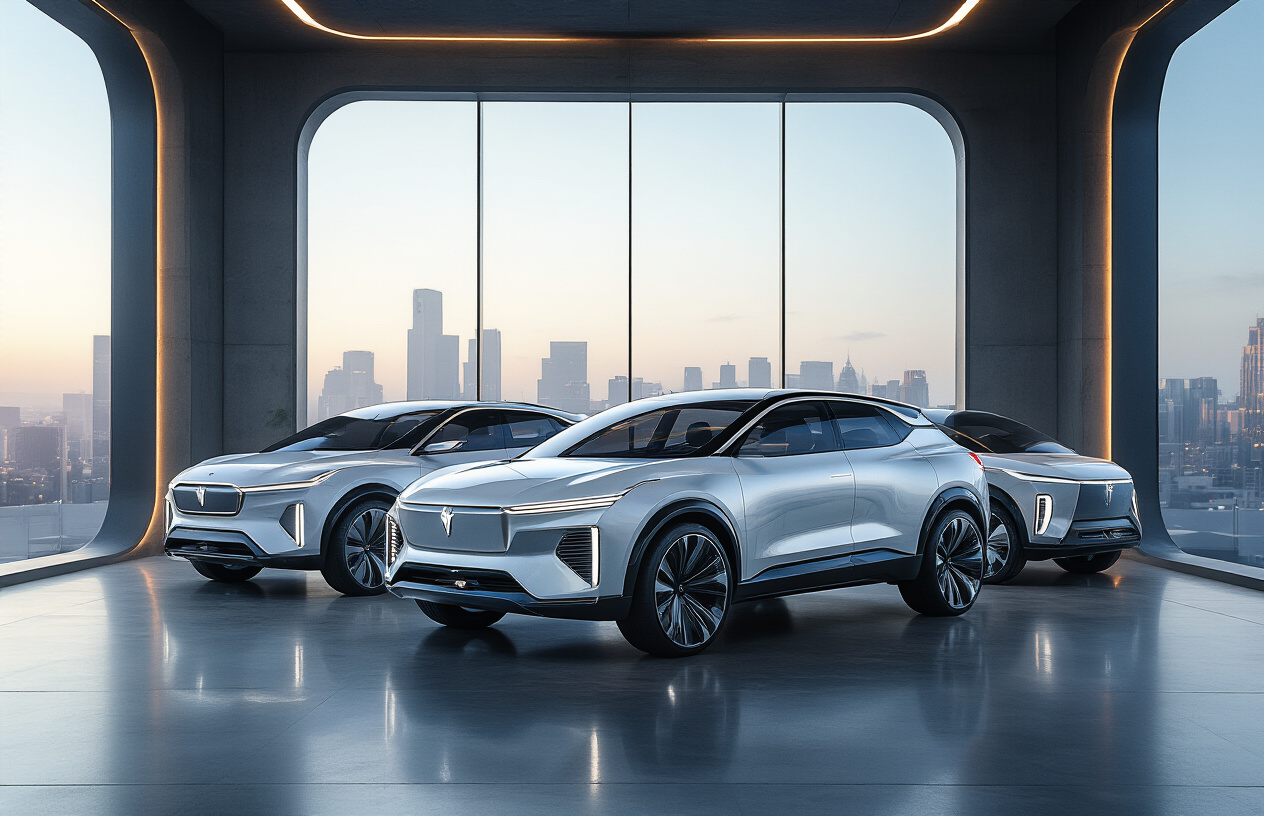
Family-friendly innovations
Remember when SUVs were just boxy gas-guzzlers with extra seats? Those days are gone. The 2025-2026 lineup is bringing tech that’ll make family road trips actually enjoyable (seriously).
Take the 2026 Toyota Grand Highlander with its “Family Command Center” – a touchscreen system that lets parents control everything from cabin temperature to entertainment options for each row. No more fights over who’s too hot or cold!
Ford’s upcoming Explorer redesign includes what they’re calling “Kid Zone” – a dedicated space with built-in tablets, wireless charging, and spill-proof upholstery that practically cleans itself. They’ve finally accepted that children are tiny chaos machines.
The Kia Telluride Pro adds an interior camera system so you can see what’s happening in the back without turning around. Perfect for catching which kid started the argument this time.
Off-road capabilities reaching new heights
The off-road SUV war is heating up, and we’re all winning.
Jeep’s 2026 Grand Cherokee Trailhawk X packs an adjustable air suspension that can deliver a whopping 14 inches of ground clearance – that’s nearly monster truck territory in a vehicle you can still park at Whole Foods.
Not to be outdone, Ford’s Bronco Raptor II is adding an “Extreme Terrain” package with crawler gears and a drone that scouts the trail ahead through a dashboard display. Overkill? Maybe. Cool? Absolutely.
Land Rover’s Defender SVX adds what they call “Terrain Mapping” – tech that scans the ground ahead and automatically adjusts suspension, differential locks, and torque distribution. It’s basically cheating at off-roading.
Hybrid and electric SUV options expanding
Electric SUVs are no longer just Tesla’s game. Every manufacturer is jumping in with options that don’t make you choose between space and sustainability.
Rivian’s R2 crossover promises 350+ miles of range in a mid-sized package that starts under $60k – basically the holy grail that EV buyers have been waiting for.
Volkswagen’s ID.8 is bringing three-row seating with a claimed 300-mile range and bidirectional charging that can power your campsite or even your home during outages.
Even Jeep is going all-in with the Recon EV, promising true off-road capability with electric motors. Their “Adventure Range” feature reserves battery capacity specifically for getting back to civilization after your trail ride.
The hybrid options are even more practical, with Toyota’s upcoming Grand Highlander Hybrid Max pushing 350 hp while still delivering 32 mpg. That’s performance car territory with minivan efficiency.
Breakthrough Technologies Coming to Market
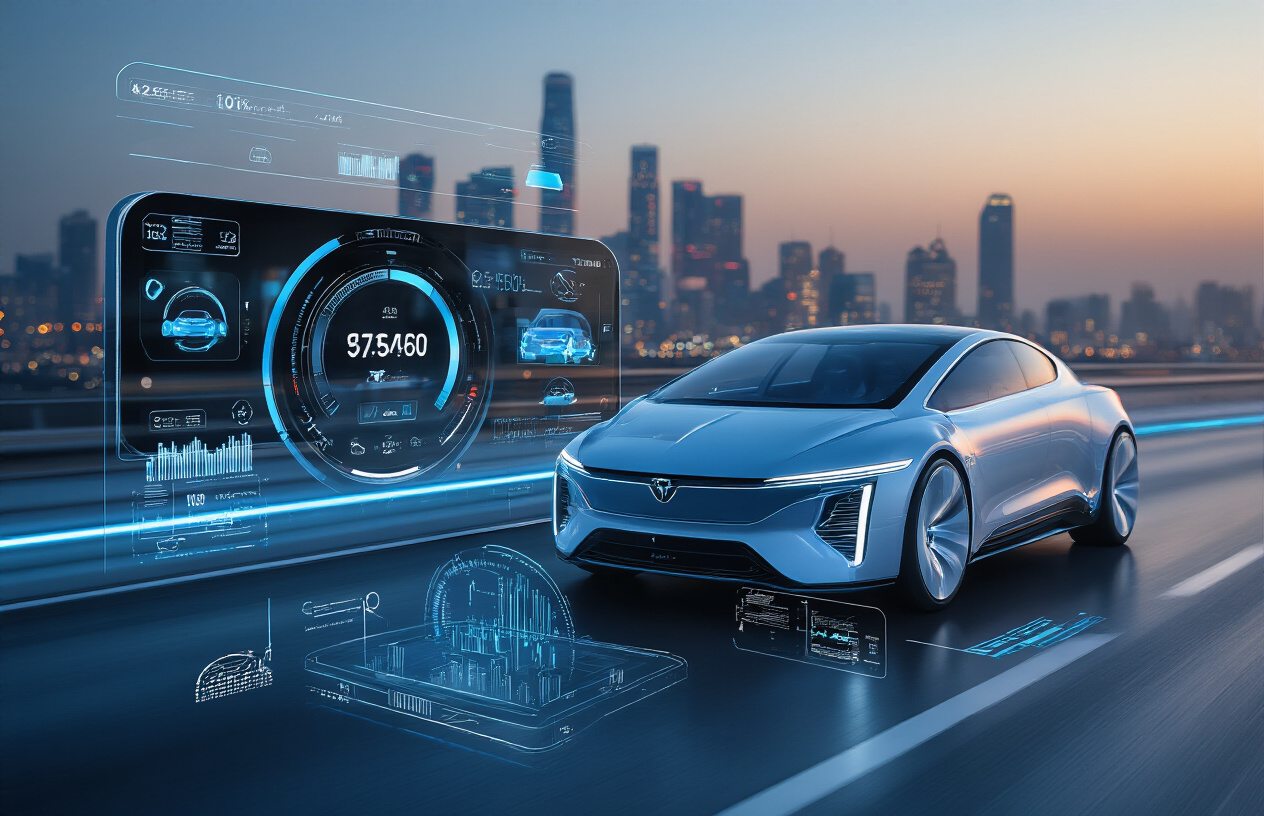
Advanced driver assistance systems approaching full autonomy
The gap between driver assistance and true self-driving is closing fast. Cars coming in 2025-2026 will feature systems that handle not just highways but complex urban environments too. Mercedes is pushing their Drive Pilot to Level 3+ capabilities, letting you legally take your eyes off the road during congestion.
Tesla’s not backing down either – their FSD beta is evolving monthly, and by 2025 might actually deliver on Musk’s perpetual “next year” promises. Meanwhile, GM’s Ultra Cruise will expand to handle 95% of driving scenarios, a massive jump from current systems.
The real game-changer? These systems won’t just react – they’ll predict. New AI processors from NVIDIA and Qualcomm will process camera, radar and lidar data 10x faster than today’s computers, anticipating other drivers’ moves before they make them.
Revolutionary infotainment integrations
Car screens are about to get wild. Forget the tablet-style displays we’ve grown used to – Mercedes’ upcoming Hyperscreen is just the beginning. BMW and Audi are developing displays that span the entire dashboard, with augmented reality overlays that highlight navigation cues in your actual field of vision.
The boring old operating systems are dying too. Android Automotive is taking over, bringing the app ecosystem we love on our phones directly into our dashboards. Spotify, YouTube, and even productivity apps will run natively without your phone.
Gaming? Absolutely. With processors rivaling home consoles, expect Tesla’s Arcade to face serious competition from traditional automakers partnering with major game studios.
Connectivity features that transform the driving experience
Your 2025 car won’t just connect to your phone – it’ll connect to everything. Vehicle-to-everything (V2X) communication is finally hitting mainstream, letting cars talk to traffic lights, road infrastructure, and other vehicles to optimize routes and avoid accidents before they happen.
Remote diagnostics are getting scarily good too. Your car will schedule its own service appointments after detecting potential issues weeks before they cause problems. Some brands will even push performance upgrades automatically, making your car faster or more efficient overnight.
The digital key revolution is also coming full circle. Your phone won’t just unlock your car – it’ll sync your entire digital life. Your car will automatically adjust everything from seat position to climate settings based on who’s approaching, and load your calendar to suggest destinations.
Sustainable materials and manufacturing processes
Leather is rapidly becoming the exception, not the rule. Porsche, Volvo and Mercedes are racing to eliminate animal products from their interiors, replacing them with sustainable alternatives that actually feel better than the real thing.
BMW’s expanding their “i” philosophy across their lineup, using recycled ocean plastic for interior components. Even luxury brands like Bentley are committing to carbon-neutral manufacturing by 2026.
The coolest innovation? Carbon-capture materials that actively clean the air around them. Polestar is developing interior fabrics that absorb CO2 throughout the vehicle’s life, while Toyota’s experimenting with paint that converts smog into harmless compounds.
The dirty secret of EV manufacturing – massive resource consumption – is getting cleaned up too. New battery technologies require significantly less mining, and battery recycling processes are approaching 95% material recovery rates.
How to Decide: Buy Now or Wait?
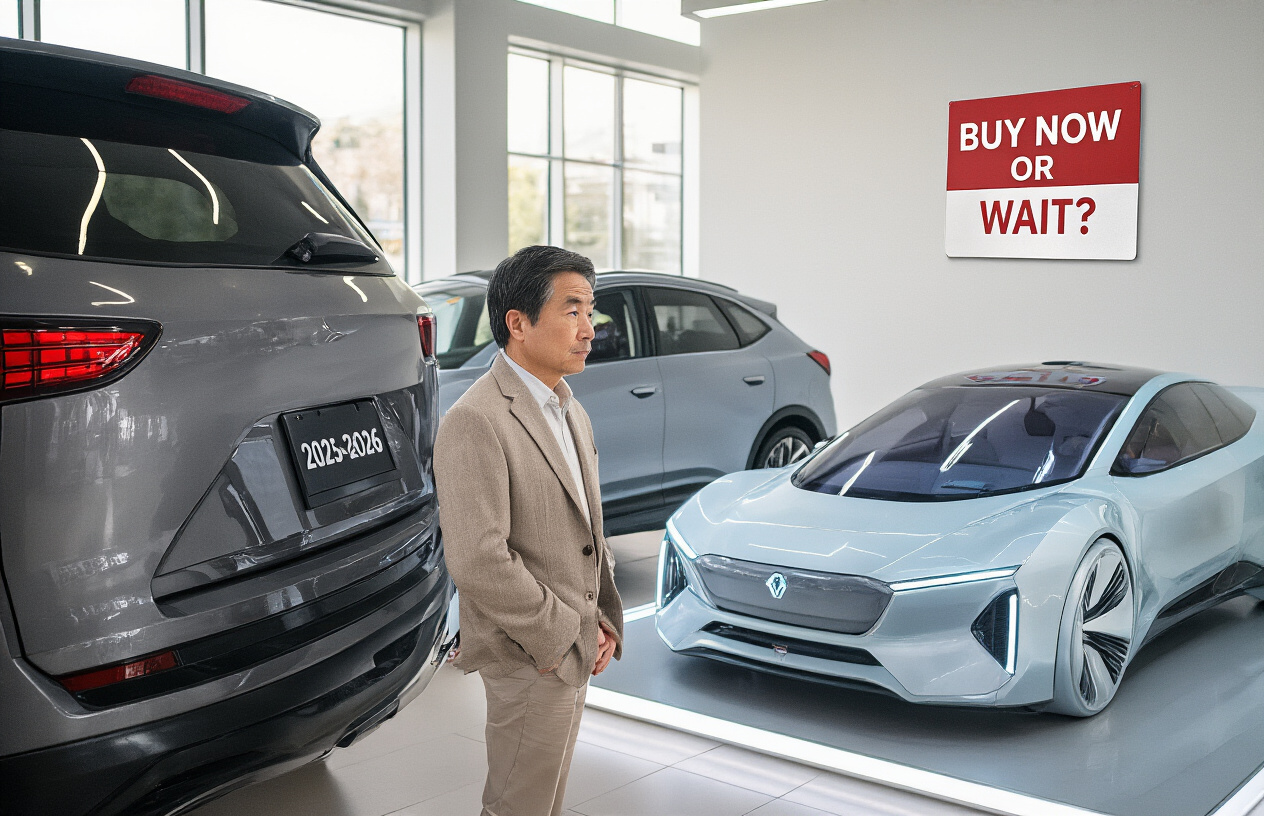
A. Financial considerations of waiting vs. immediate purchase
Buying a car now versus waiting until 2025-2026 isn’t just about shiny new features. It’s about cold, hard cash.
New models typically come with premium price tags. That first-year markup? It’s real, and it’ll cost you. Cars released in 2025-2026 will likely command 10-15% more than comparable current models.
Meanwhile, today’s cars often come with hefty incentives. Dealers trying to clear inventory for those future models might slash prices by thousands. We’re talking end-of-model-year discounts, manufacturer rebates, and desperate salespeople willing to negotiate.
But here’s the flip side: newer models generally offer better fuel efficiency and lower maintenance costs. A 2026 EV might save you $500+ annually in fuel compared to a 2023 model.
| Financial Factor | Buy Now | Wait for 2025-2026 |
|---|---|---|
| Initial Cost | Lower (incentives available) | Higher (new model premium) |
| Depreciation | Steeper first-year drop | Slower initial depreciation |
| Running Costs | Higher (fuel, maintenance) | Lower (efficiency improvements) |
| Financing | Current rates (potentially lower) | Future rates (unpredictable) |
B. Leasing options to bridge the gap
Not sure if you should pull the trigger now or wait? Leasing might be your golden ticket.
A 24-36 month lease on a current model gives you wheels today without committing to a car that’ll feel outdated when those 2025-2026 beauties hit showrooms. The math makes sense – you’re only paying for the depreciation during your lease period, not the entire vehicle.
Short-term leases have another hidden advantage: flexibility. Market changing faster than expected? Electric vehicle tax credits improving? You’re not locked into a 6-year loan on yesterday’s technology.
Many manufacturers offer lease-to-own programs too. Fall in love with your leased ride? You can buy it when the term ends. Hate it? Hand over the keys and walk away (assuming you’ve stayed within mileage limits and kept it in good shape).
Just watch those mileage restrictions. Most leases cap you at 10,000-12,000 miles annually, with hefty penalties for going over.
C. When waiting makes financial sense
Holding out for those future models actually makes dollars and sense in several scenarios.
First, if you’re eyeing an electric vehicle. Battery technology improves roughly 5-8% annually, meaning 2025-2026 models will likely offer significantly better range at lower prices. Plus, charging infrastructure is expanding daily.
Second, if you’re after cutting-edge safety tech. Driver assistance features are evolving rapidly, and those 2-3 year advancements could literally save lives.
Third, if you’re currently driving a vehicle that’s still reliable. That paid-off car in your garage? It’s practically printing money compared to a new monthly payment.
Fourth, if you’re expecting a major life change. Growing family? Retirement? Career shift? Future models might better accommodate your new reality.
The waiting game works best when your current transportation needs are met and you’re financially disciplined enough to save the difference between today’s payment and nothing.
D. When current models offer better value
Sometimes that bird in hand really is worth two in the bush.
Today’s cars represent proven technology. The kinks are worked out, reliability data exists, and real-world fuel economy numbers don’t lie. Those first-model-year 2025 vehicles? They’re guinea pigs with fancy badges.
Immediate availability is huge too. Supply chain issues have created waitlists for popular models. Need a car now? Today’s models are, well, available today.
Don’t overlook the value of current incentives. Between manufacturer rebates, dealer discounts, and financing deals, you might save $5,000+ on a 2023-2024 model – savings that will vanish once those models are discontinued.
And truthfully, will those 2025-2026 features dramatically improve your daily drive? If current models already offer the tech you actually use (and let’s be honest, most of us use about 40% of our car’s features), waiting means paying a premium for bells and whistles you’ll never touch.
E. Trade-in timing strategies
Timing your trade-in can mean thousands in your pocket or down the drain.
The sweet spot for trading in most vehicles? Years 3-5. You’ve weathered the steepest depreciation, but the car still has enough value and appeal to command a decent price.
Seasonal timing matters too. Convertibles fetch more in spring, while 4WD/AWD vehicles peak in value just before winter. Trading in a small fuel-efficient car during gas price spikes can net you a premium.
Your current car’s maintenance schedule should factor in. Trading in right before major service intervals (timing belts, 60k/100k services) lets you dodge those expenses.
If you’re eyeing those 2025-2026 models, consider this strategy: sell your current vehicle privately now while used car values remain strong, use a cheaper temporary vehicle or alternative transportation, then buy when the new models launch.
The worst trade-in strategy? Waiting until your car develops serious problems. Once the check engine light becomes your constant companion, you’ve already lost thousands in potential trade value.
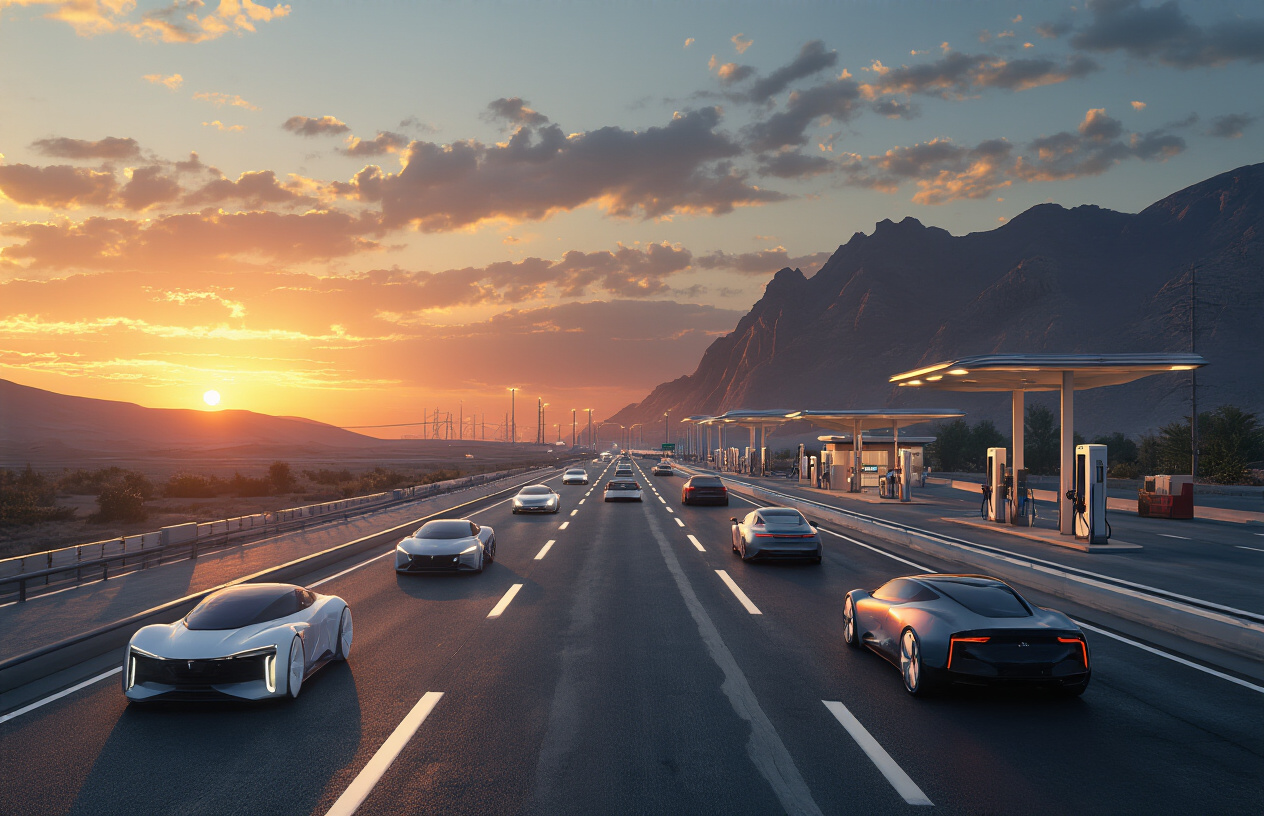
The automotive landscape is set to undergo a remarkable transformation in 2025-2026, with groundbreaking releases across luxury sedans, sports cars, electric vehicles, and reimagined SUVs. From cutting-edge EVs leading the industry’s electric revolution to luxury models pushing the boundaries of performance and comfort, these upcoming vehicles showcase unprecedented technological advancements that will redefine our driving experience.
Whether you should postpone your purchase depends on your current needs, budget constraints, and technological preferences. If you’re excited by the promise of next-generation features and can extend your current vehicle’s life, waiting might prove worthwhile. However, if immediate transportation needs are pressing, today’s market already offers impressive options. Regardless of your decision, the next two years promise to be among the most innovative periods in automotive history, making this an exciting time for car enthusiasts everywhere.


